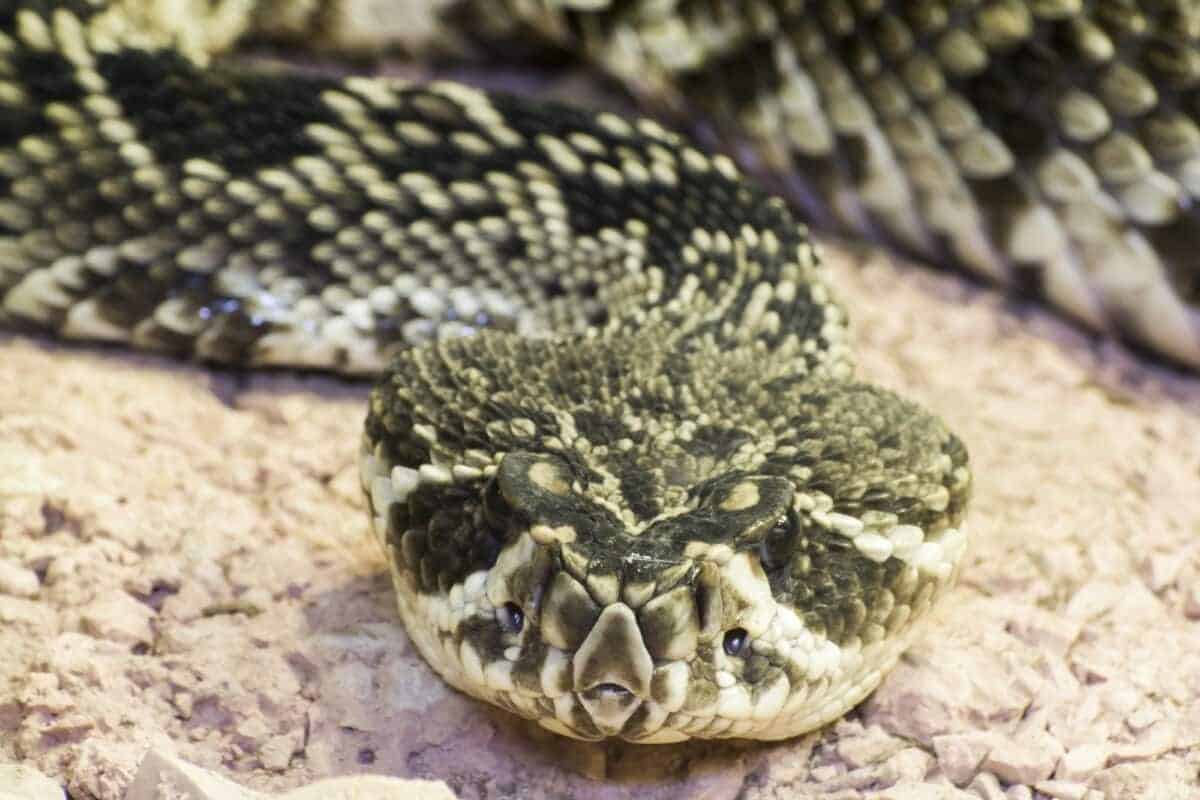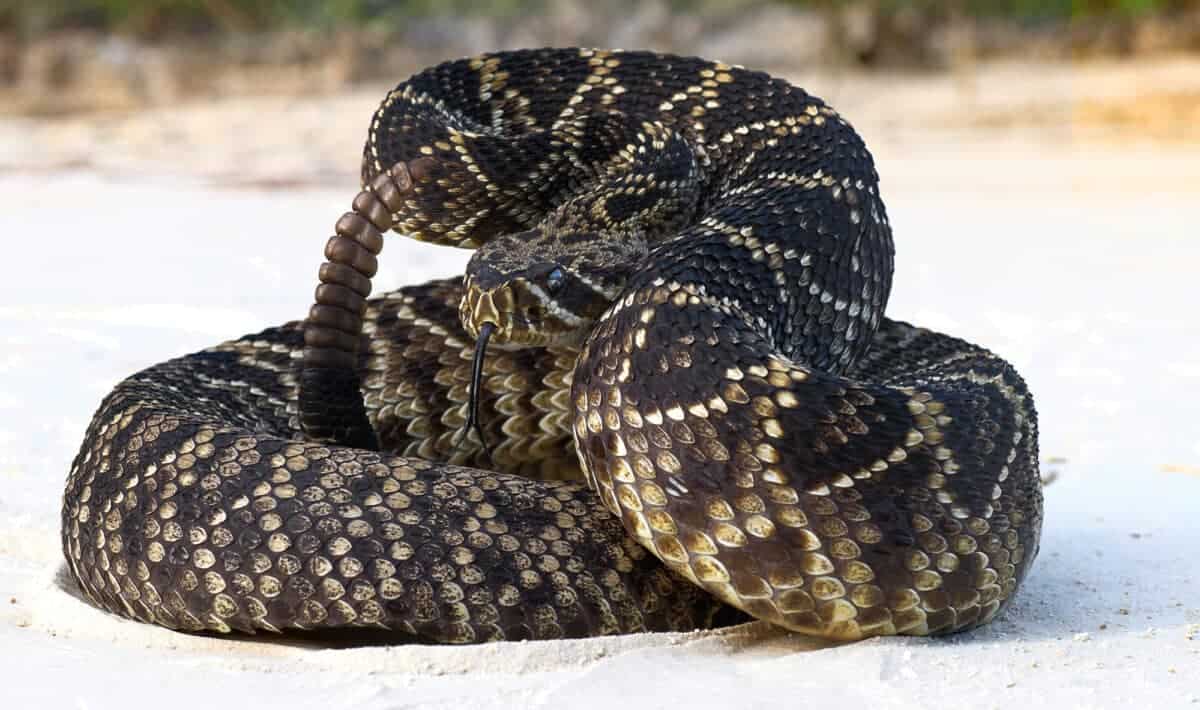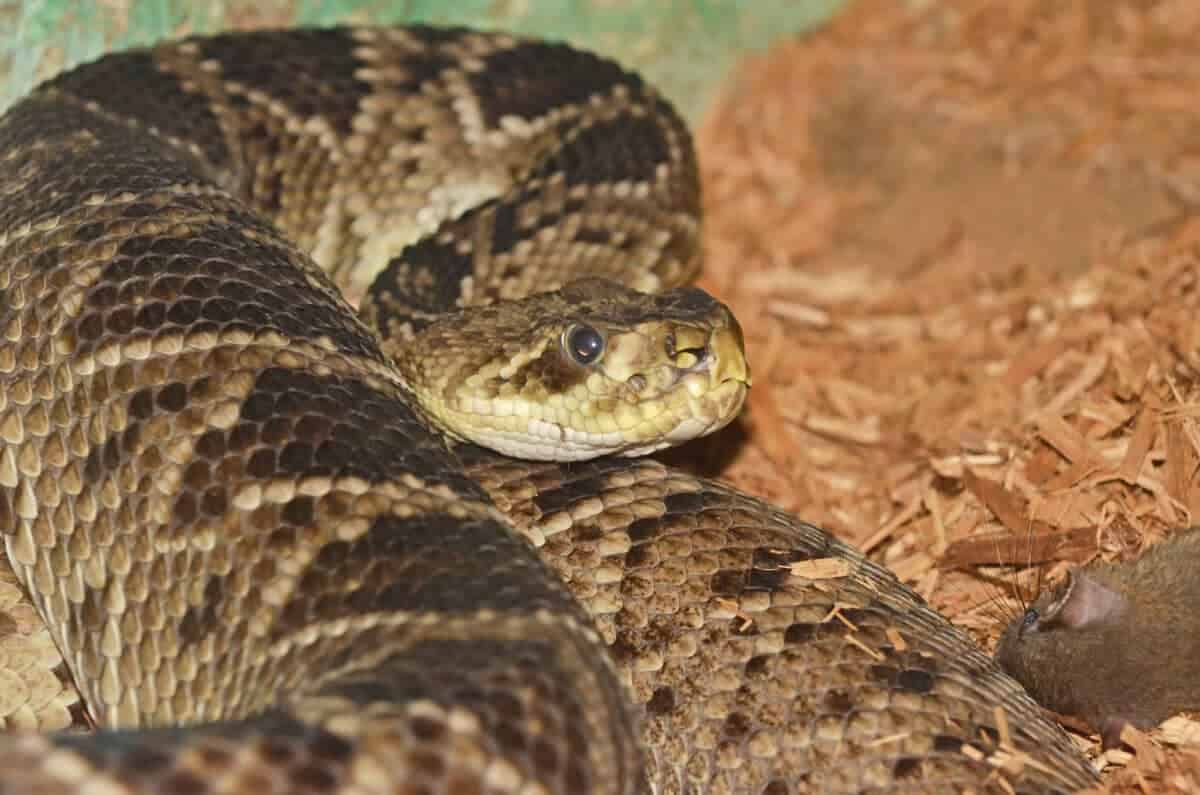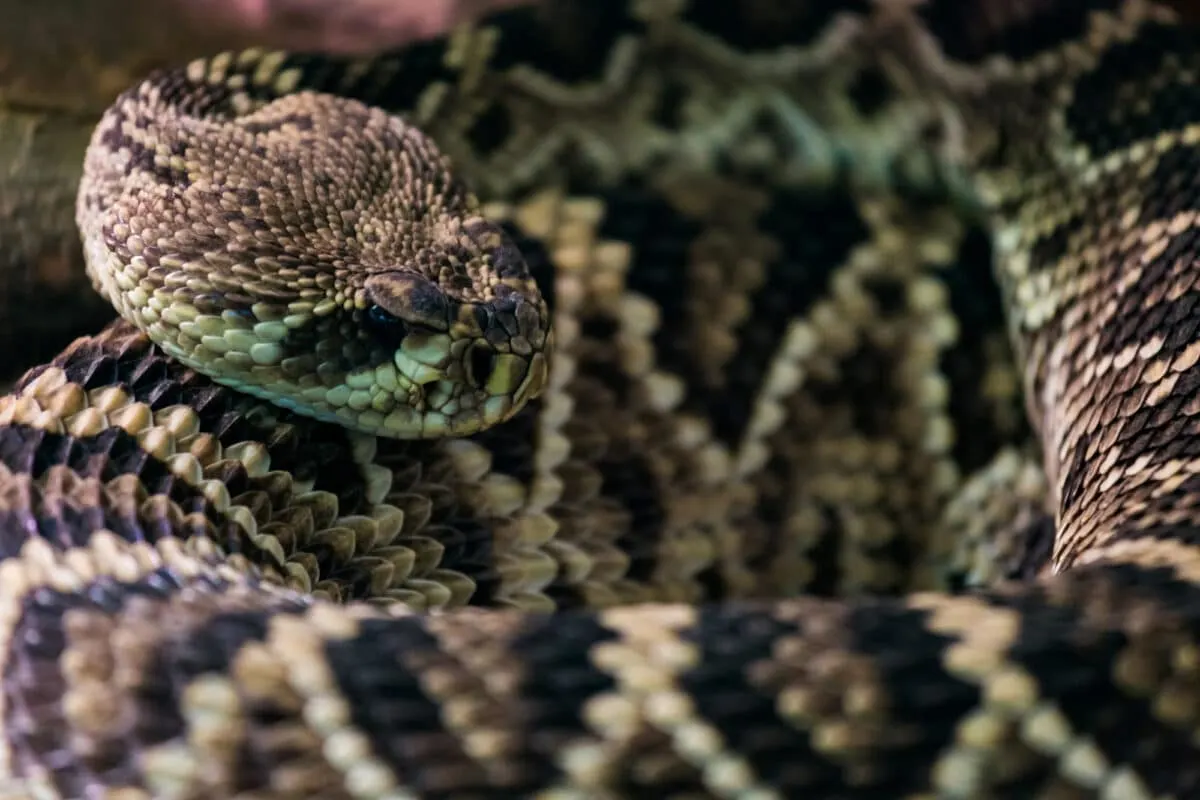Eastern diamondback rattlesnakes are among the most dangerous snakes in North America. They live in the southeastern United States and have a distinctive pattern of black, brown, and yellow scales that make them easy to identify. Eastern diamondback rattlesnakes are also known for their loud rattle at the end of their tails, which they use as a warning sign to predators.
The venom from an Eastern diamondback rattlesnake bite is extremely potent and can cause severe tissue damage, pain, swelling, and even death if not treated immediately. The venom can affect the circulatory system by destroying skin tissues and blood cells, causing nausea, excessive bleeding, and swelling in the mouth and throat.
If an Eastern diamondback rattlesnake has bitten you or someone you know, it is vital to remain calm and call 911 immediately. While waiting for medical help, it is important not to move around too much, as this can cause the venom to spread faster throughout your body.
It is also important not to apply ice or a tourniquet, as this could worsen the situation. Remember what the snake looked like so medical personnel can provide appropriate treatment for the specific type of snake bite.

Want to jump ahead? Click below
Eastern Diamondback Rattlesnake Bite Symptoms

The snakes are one of the most venomous snakes in North America. They can be found in the southeastern United States, from southern Virginia to Florida and west to eastern Texas. While they are not aggressive and typically try to avoid contact with humans, their bites can be very dangerous.
The symptoms of an Eastern diamondback rattlesnake bite include pain and swelling at the site of the bite, nausea and vomiting, difficulty breathing, rapid heartbeat, and fainting or loss of consciousness. The pain is usually intense and may spread away from the bite area. It may swell, and the person may experience nausea several hours after a bite.
Difficulty breathing is also a common symptom caused by swelling in the throat or mouth. A rapid heartbeat may indicate shock due to a reaction to venom or blood loss from internal bleeding. Fainting or loss of consciousness is a serious sign that requires immediate medical attention, as neurotoxins in the snake’s venom could cause it.
Potency
The danger of an Eastern diamondback rattlesnake’s venom lies in its potency; it contains hemotoxins that cause tissue damage and neurotoxins that affect nerve function. If bitten by an Eastern diamondback rattlesnake, it is important to seek medical attention immediately, as its venom can cause serious injury or death if left untreated.
If an Eastern diamondback rattlesnake bites you, remain calm and move away from the snake without putting yourself at further risk. Call the emergency number immediately for help and keep still until help arrives; do not attempt to capture or kill the snake, as this could put you at further risk of being bitten again.
It is important not to panic as this will increase your heart rate, which could speed up the absorption of venom into your bloodstream; instead, focus on staying calm until help arrives so that medical professionals can provide treatment quickly and effectively.
Treatment for Eastern Diamondback Rattlesnake Bites

If an Eastern diamondback rattlesnake bites you, it is essential to seek immediate medical attention. The venom of the Eastern diamondback rattlesnake is hemotoxic. This means it can cause tissue damage and affect the blood’s ability to clot. Without prompt treatment, a bite from this snake species can be fatal.
Additionally, treatment for Eastern diamondback rattlesnake bites typically involves anti-venom. Furthmore, it helps neutralize the venom and reduce its effects on the body. Anti-venom is most effective when administered as soon as possible after the bite occurs. In addition to anti-venom, pain management medications may help manage any pain or discomfort associated with the bite.
Supportive care is also vital in treating Eastern diamondback rattlesnake bites; This may include providing fluids intravenously to prevent dehydration and oxygen therapy to help maintain adequate oxygen levels in the body. Other supportive treatments may include monitoring vital signs, such as heart rate and blood pressure, and wound care at the bite site.
It is important to remember that a qualified medical professional should only provide treatment for Eastern diamondback rattlesnake bites with experience treating snakebite victims. If an Eastern diamondback rattlesnake ever bites you, seek immediate medical attention for proper diagnosis and treatment.
Prevention of Eastern Diamondback Rattlesnake Bites

Eastern diamondback rattlesnakes are one of the most dangerous snakes in North America. It is important to be aware of their habitats and behaviors to prevent bites from these venomous creatures. Eastern diamondback rattlesnakes are found in the southeastern United States, primarily in Florida and Georgia. Although also in South Carolina, Alabama, Mississippi, Louisiana, and Texas. They prefer wooded areas with plenty of covers, such as logs or rocks, and often hide under leaves or debris.
When venturing into areas where Eastern diamondback rattlesnakes may be present, it is essential to wear appropriate clothing and footwear. Long pants and closed-toe shoes should always be worn. Especially when hiking or working in areas where Eastern diamondback rattlesnakes are known to live.
Additionally, it is essential to use caution when walking through tall grasses. As well as other vegetation that could provide hiding places for a snake. If you encounter a snake on the trail, do not attempt to touch or disturb it. Rather instead, back away slowly and give it plenty of space.
Finally, if an Eastern diamondback rattlesnake bites you, seek medical attention immediately. It is essential to remain calm until help arrives. Movement can cause the venom to spread faster throughout your body. Knowing how to prevent Eastern diamondback rattlesnake bites can help keep you safe while outdoors!
Key Points

Crotalus adamanteus is a pit viper species found in the southeastern United States.
| Eastern Diamondback Rattlesnakes are among the most dangerous snakes in North America. |
| The venom from an Eastern diamondback rattlesnake bite is extremely potent and can cause severe tissue damage, pain, swelling, and even death if not treated immediately. |
| The symptoms of an Eastern diamondback rattlesnake bite include pain and swelling at the site of the bite, nausea and vomiting, difficulty breathing, rapid heartbeat, and fainting or loss of consciousness. |
| Treatment for Eastern diamondback rattlesnake bites typically involves anti-venom, pain management medications, and supportive care, such as fluids and oxygen therapy. |
| To prevent Eastern diamondback rattlesnake bites, it is important to be aware of their habitats and behaviors and wear appropriate clothing and footwear when hiking or working in areas where they are known to live. |
| If bitten by an Eastern diamondback rattlesnake, it is important to seek immediate medical attention, remain calm, and not move around too much to prevent the venom from spreading faster throughout your body. |
Wrapping Up with Eastern Diamondback Rattlesnake Bite
In conclusion, the Eastern diamondback rattlesnake is one of the most dangerous snakes in North America. These snakes are found in the southeastern United States and are known for their distinctive pattern and loud rattle. If bitten by one of these snakes, it is essential to seek medical attention immediately.
Their venom is extremely potent and can cause severe tissue damage, pain, swelling, and even death if not treated promptly. The symptoms of an Eastern diamondback rattlesnake bite include pain and swelling at the site of the bite, nausea, vomiting, difficulty breathing, rapid heartbeat, and fainting or loss of consciousness.
Thanks for following along with me! I hope you enjoyed reading about these two entertaining animals. Next are Sydney Funnel-Web Spider Bite, Yellow-Bellied Sea Snake Bite and Brazilian Wandering Spider Bite.
- Bald Eagle Family Expand Their Nest In California - April 24, 2024
- Firefighter Saves Abandoned Kittens Found Cuddling In Hoses - April 24, 2024
- Dolphins Get High Playing Catch With A Pufferfish - April 24, 2024


